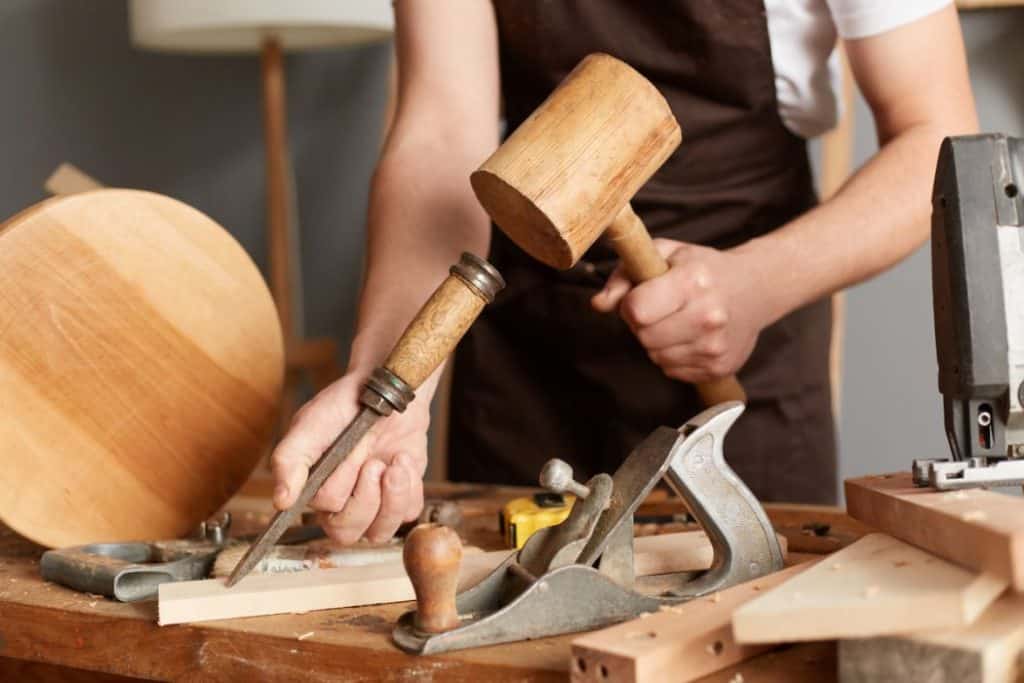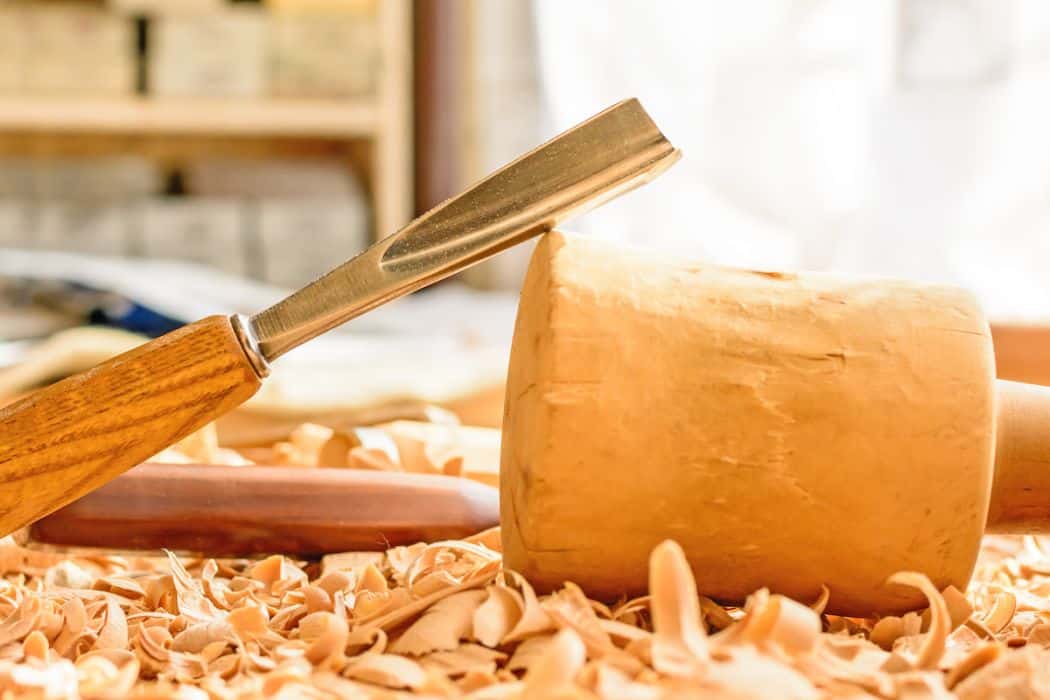Most woodcarvers or even wood whittlers use wooden round-headed mallets. These have been used for centuries so there must be a good reason why.
One answer is that the round shape increases the surface area which can strike the chisel. This means that you do not need to worry about angles, or whether or not the flat part of your mallet is hitting the chisel – instead, you can focus more on the actual cuts being made on the piece being carved. It’s also easier on the carver.
Tools for Wood Carving
Wood carving can involve work with the hands, or with power tools. Here, we are discussing the former. The full range of tools that may be used for when working by hand include:
- Chip Carving Knives
- Carpenter’s Chisels
- An assortment of gouges (U-Gouges, V-Gouges, Palm, Bent and Spoon Gauges)
- Skewed Chisels
- Driving or hammering tools (hammers as well as wooden/rubber mallets).
Using a Wooden Mallet
Besides a claw hammer and a tack hammer, a toolkit needs to incorporate specialty tools that fulfill the same purpose but can be used to drive soft objects. Enter the mallet.
The mallet is most often used to knock wood pieces together, or to hammer dowels and chisels when the work involves some delicacy.
The advantage of using a wooden mallet is that it won’t damage the chisel or unnecessarily mar the wood being worked on. It lets you exert better control than a hammer, given the softer force driving the cutting edge of a chisel.

Rubber mallets are used when the work requires an even softer touch involving brittle material, such as ceramic tiles, PVC piping or laminate flooring being tapped into.
The wood mallet is the preferred tool for wood carving and hewing, where a hammer is too much and a rubber mallet not hard enough.
The nature of work requires a firm but delicate touch, with maximum concentration on the wood surface being worked on and minimum risk of damage from an inadvertently placed blow.
Types of Mallets
Broadly speaking, there are five types of mallets used for woodworking:
- Wood Joiner’s Mallet
- Dead Blow Mallet
- Wood Carving Mallet
- Log Riving Mallet
- Nylon Mallet
Out of these, the ones that are both wood, and typically rounded (cylindrical), are the Wood Carving Mallet (aka Carver’s Mallet) and the Log Riving Mallet (also called a “Froe Mallet”).
Round Carver’s Mallet(s)
Large and small sized Carver’s Mallets are used to drive gouges or with bench chisels. The size chosen depends on the amount of material being removed and/or to make precise cuts and shapes. The smaller sizes work in tight spaces. Additionally, some carvers will use small Metal Head Carver’s Mallets, which are used with screwdrivers and non-wooden handle tools.

Why the Round Shape?
As explained above, mallets act as hammers that are used to drive soft objects (from chisels and gouges to dowels, pegs and spindles) that may split if struck with a hammer. The Carver’s mallet is meant for precision work, sometimes in tight spaces.
The mallet is often used to strike chisels one handed with short, continuous strokes – at varying angles. The rounded shape of the carver’s mallet enables the woodworker to perform those tasks in relative comfort, without having to shift the mallet position or change arm angles.
Round vs. Square Head Mallets
Building on the discussion above, it’s fair to say two things:
First, square head mallets are better suited for more forceful work, and typically used on larger jobs, such as carpentry (e.g., doors) and cabinet making, as well as for mortising and/or heavier chopping duties. Round headed mallets are used for lighter work, ranging from chisel driving with large sized mallets to lighter work with carving tools and small mallets.
The main advantage of a round mallet is that every side is a face, posing minimal risk that the chisel or the wood being carved could be harmed if the wielder does not position the mallet head at the proper angle.
Having said that, the shape of the mallet is largely a matter of comfort and personal preference. Some woodworkers may say that using a round mallet greatly reduces the amount of concentration required and eases considerable tension on the hands, arms and eyes. Others may simply be used to using square mallets – which work fine for their style.
The Final Verdict – Use the Round Mallets for Precision Jobs
Woodworkers who have not been introduced to round mallets should try them without hesitation if they are looking to perform light chiseling and precision work.
The design is aimed at allowing you to work smoothly and continuously, focused on the woodwork, while minimizing strain. Even if you are used to square mallets, keep an open mind – you will likely notice a perceptible difference.




